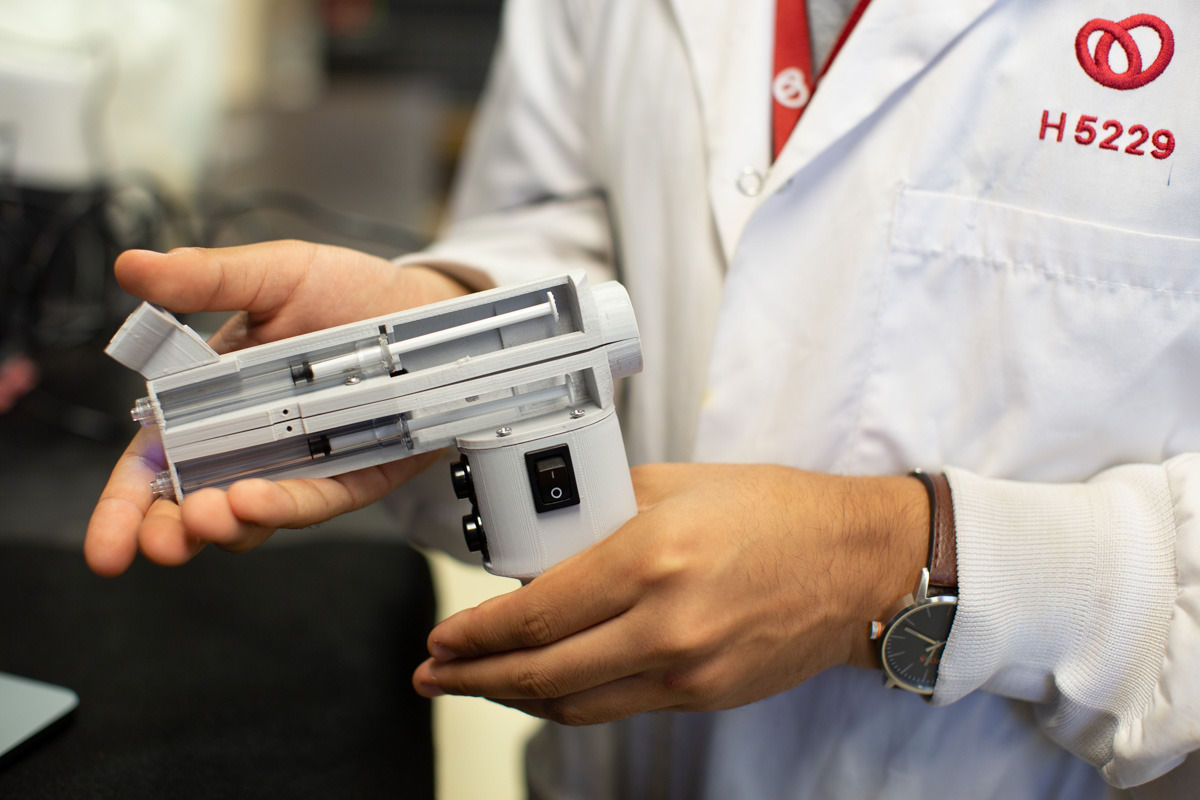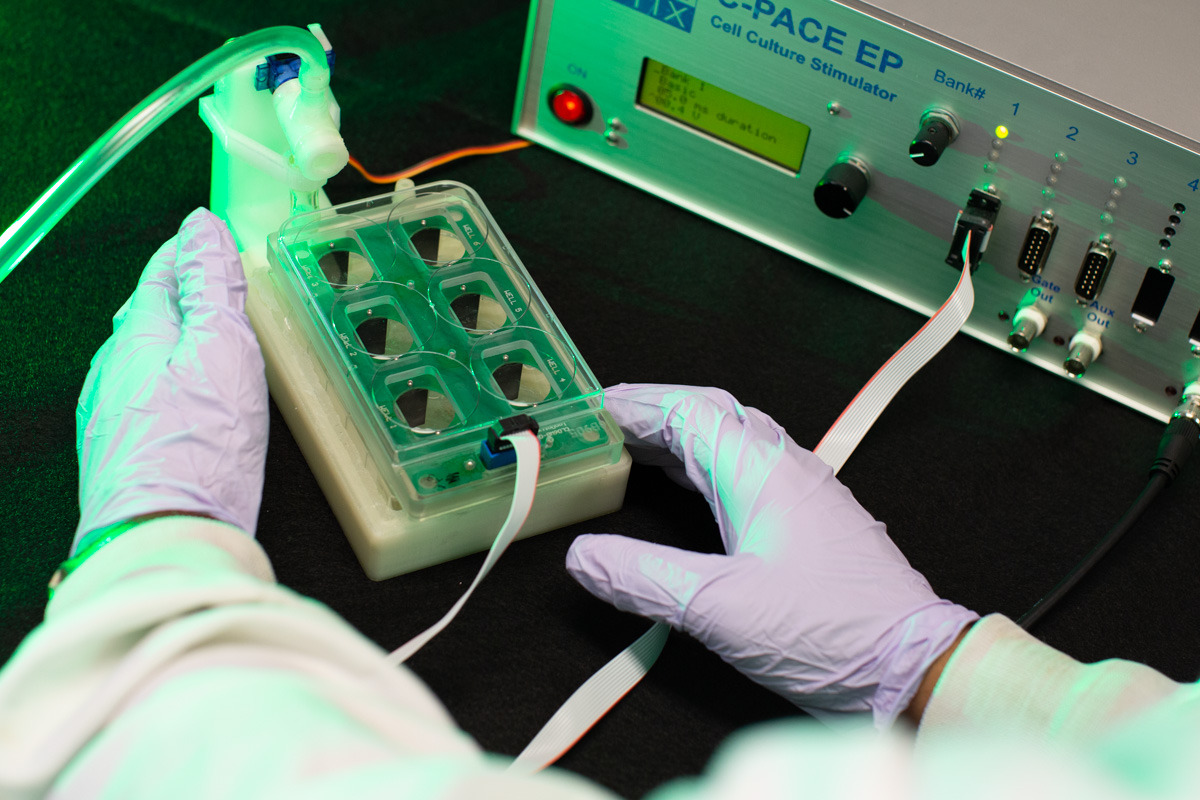By Michelle Read
Printable, on-the-spot heart repair. Tiny vehicles delivering stem cells to organs in need. Silver scaffolds implanted into an eyeball. Scenes from a sci-fi film, or plausible therapy?
The BioEngineering and Therapeutic Solutions lab (BEaTS) at the University of Ottawa Heart Institute is moving medical care into the future by producing such innovations with the potential to save billions of dollars for the health care system.
But more than that, principal investigator Dr. Emilio Alarcon feels an urgency to jump into the future for another important reason – the rapidly growing number of patients in need.
Heart diseases are the number one cause of premature death in Canada, says Dr. Alarcon. Millions of Canadians live with heart disease, he explains, with many going on to develop heart failure.
“The heart is literally failing in such cases, with the number increasing by about 50,000 people each year,” Alarcon says. “Conventional treatments such as drugs or cell therapies save lives, but do not cure failing hearts, which instead need specialized health care.”
Customized heart patches made to order with patient on the table
Materials already exist to repair heart functionality, says Alarcon, but they are not customized to the specific patient. Materials need to flex and conduct electricity in a manner specific to each individual patient’s unique heart.
To this end, the team is developing a heart patch that can be printed on a special printer as a patient lies on the operating table, and applied by the doctor to the patient’s heart.
“Our heart patch will provide a new therapeutic tool for recovering heart function, and save thousands of lives in Canada and millions of dollars in health care costs,” Alarcon explains.
The Alarcon team also develops and implements new materials with regenerative capabilities for tissue regeneration of other organs including muscles, as well as connective and soft tissues. These treatments are expected to help improve the quality of life for hundreds of thousands of Ontarians.
Tiny silver scaffolds engineered to grow human tissue
Among their innovations, the team is building regenerative platforms – imagine tiny scaffolds made of nanoengineered silver – on which new tissues can be grown and accepted by a patient’s body as a treatment for their disease. Such electroconductive nanoengineered materials are of great use in cardiac repair, for example.
Current technologies of growing, mimicking and implanting new tissues has limitations, says the assistant professor in the Department of Biochemistry, Microbiology and Immunology, hence their goal of new methods of tissue regeneration.
The materials being developed by the Alarcon team will have improved mechanical properties such as flexibility, as well as novel antibacterial and anti-inflammatory properties for reduced infection and rejection by the body.
The team is also developing microcapsules to surround stem cells as they travel through the patient’s body to the point of injury. In contrast to older versions, these capsules will remain in place as the cells are being delivered, boost the engraftment of the cells, and safely biodegrade when they have completed their mission.
The future is now thanks to robust support and collaboration
The work of the Alarcon lab has received significant funding of late from the Canadian Institutes of Health Research, the Tri-Agency New Frontiers in Research Fund Program, the Natural Sciences and Engineering Council of Canada, Collaborative Health Research Projects and the Ontario Institute for Regenerative Medicine, allowing the team to push forward in their goals for future clinical use.
Also important in accelerating innovation in health care, says Alarcon, is outreach between scientists within the research community to connect interdisciplinary, outside-the-box thinkers. His new endeavor, BEaTS-R2, will see scientists and early career researchers interview a lineup of scientists and innovators from Canada and worldwide. Launching in the fall and streaming from his lab, it will be the first radio streaming from an actual laboratory.
With pioneering thinkers like Alarcon and team, perhaps the future isn’t quite as far away as we thought.





